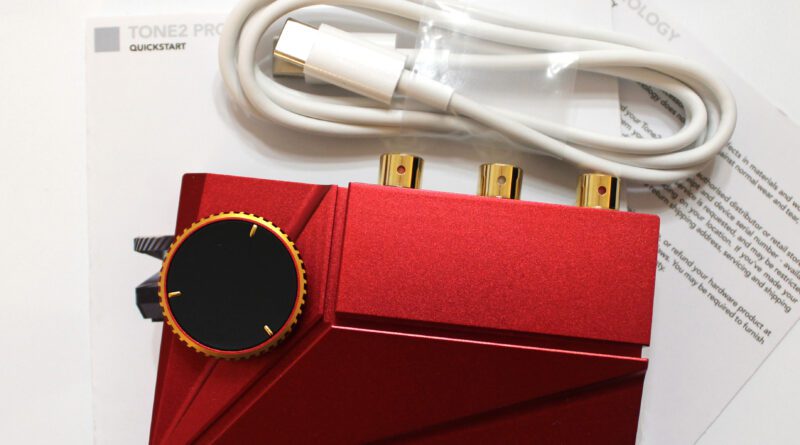I’ve reviewed quite a few dongle style DAC/Headphone Amps over the last year or so, and I must say I dig them.
Their compact size coupled with their affordability makes them an ideal way to upgrade a smartphone or laptop's sound while on the go.
Recently, I was really wowed by the
$99 HELM Audio Bolt DAC/AMP, which offers amazing THX Certified sound and MQA/DSD compatibility in a ridiculously small package.
However, these dongle or USB Stick (think
AudioQuest Dragonfly) style DAC/Amps do have their limitations. For example, If you need a line output other than the 3.5mm jack, a digital input, or even physical controls in most cases, you’re out of luck.
If that’s something you’ve come up against, then the
$199 Khadas Tone 2 Pro DAC/Headphone Amp may be just what the doctor ordered. It’s not that much bigger than an Audioquest Dragonfly, yet it has all the stuff mentioned above.
Not only that, it has two balanced outputs (both 4.4mm and Line Out), which is remarkable for its size.
We put the Tone2 Pro through its paces and found it to be a very competent performer. It plays all major music file formats (PCM, DSD, MQA full unfold!), plus the sound was balanced, layered, and clean. It’s also built well, utilizing a slick-looking aluminum frame and control knob.
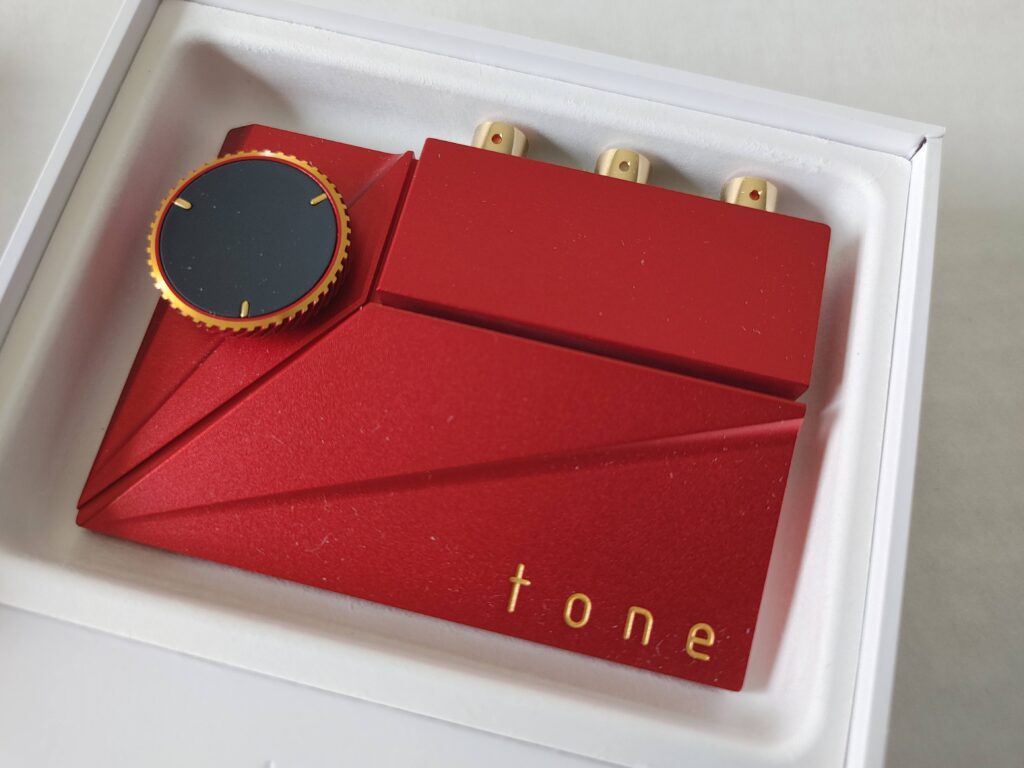
The only issue I had with it was the confusing control scheme. It works, but it’s rather hard to follow and will take some time to get used to. If you can get past this, the Tone 2 Pro is a compelling DAC/Amp option for those who want a tiny yet flexible device.
Read on for the complete rundown of this fascinating piece of gear!
 Key Features:
Key Features:
- DAC + Headphone Amplifier - Uses top-of-the-line ESS ES9038Q2M Sabre DAC Chip with 4 super-quiet TI OPA1612 operational amplifiers.
- Hi-Res Decoding - Up to 32bit 384KHz sample rate for PCM and bit-perfect DSD512.
- Full Hardware MQA Decoding - XMOS XU216 processor for full MQA decoding.
- Balanced RCA - Innovative "balanced RCA line-out" with 3-pin output
- Linear Power Supply Compatible - Tone2 Pro has a second USB-C (I2S) port that supports 5V linear power supplies.
- Coaxial Input - Solid connection for CD-Transports
- Digital Filters- 7 digital filters to tweak the sound with.
Build/Features
If you’ve never heard of Khadas, don’t feel bad. Before this review, I didn’t know about them either. When I was offered the Tone2 Pro for review, the design and feature list piqued my interest.
However, I still like to do my due diligence regarding the manufacturer of a product. Thru research, I found out they’re a Chinese company
that specializes in mini-computer boards for the DIY market (similar to the Raspberry Pi).
They appeared on the DIY audiophile radar a couple of years back with a compact DAC/audio Card called the
Tone Board (now Tone 1). It’s a bare board audio card that incorporates an ESS DAC chip.
Despite being a bare board, which means it has no casing, the $99 Tone Board stirred up some buzz as a budget DAC option since it has a USB power connection and RCA outputs. Folks built cases for them and plugged them into headphone amps. The buzz grew so loud that it even
made an appearance on the popular YouTube channel Z Reviews.

In an attempt to build upon that success, Khadas came out with the product we’re reviewing today, the
$199 Tone2 Pro DAC/Headphone Amp. The Tone 2 Pro is for those who may like the Tone Board's sound quality but want a finished DAC design, and the 2 Pro delivers that along with a pretty powerful headphone amp section.
Like the Tone Board, the Tone 2 Pro is based around the much desired ESS ES9038Q2M DAC chip. That chip has been paired with four TI OPA1612 operational amplifiers (said to be some of the quietest on the market) and three buffer amplifiers.
According to Khadas, this 3-stage amplification pathway allows their newest DAC to drive a wide range of power-hungry headphones (up to 150 ohms impedance recommended).
For the Tone2 Pro, Khadas placed their compact DAC board inside an angular aluminum enclosure (comes in red, blue, or black) about the size of a credit card. The slimline case has a knurled aluminum volume/control knob (which is very smooth) on top, surrounded by an RGB ring light for visual feedback. The whole package is pretty snazzy looking and sturdy to boot.
The bottom of the enclosure is an anti-slip rubber pad that helps keep the device in place, but don’t expect total stability since it’s rather lightweight. A heavy headphone cable will cause it to shift around a bit.
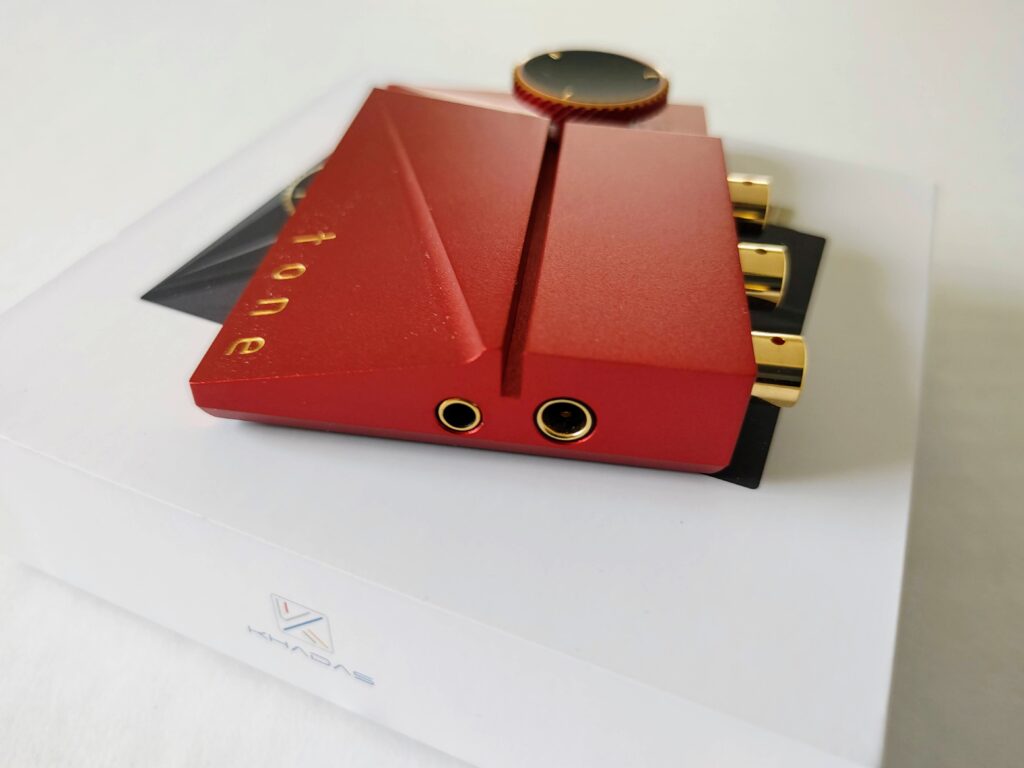
On the side of the Tone2 Pro is a 4.4mm balanced headphone jack, along with a 3.5mm single-end jack, and on the rear are two balanced RCA jacks (a Khadas standard), a coaxial digital input for CD Transports, plus two USB-C connections. The balanced RCA connectors are the first of their kind. So to use them, you have to
purchase special cables from Khadas. I didn’t receive those cables, so I didn’t have an opportunity to test the balanced output.
As stated before, there are two USB ports. Each performs a different function. One port is for power/external modules (I2S), and the other is a digital input for laptops or smartphones. Khadas says the I2S USB port will support a future Bluetooth module compatible with premium BT codecs like aptX HD or LDAC.
When it comes to features, the Tone2 Pro has tons of them, which is a blessing and a curse. That’s because, to access many functions, you’re locked into a frustrating control scheme based around the volume knob and the LED ring surrounding it.
For example, if you want to change the gain from low to high, you have to press the knob down twice (not easy), then scroll to the mode you want to set. To know what mode you are selecting, you have to count red lights on the LED ring, which are not easy to see. By the way, good luck remembering how many lights signify what.

To access Gain mode, you must scroll the wheel to reveal three red lights, and then you have to press the knob again. At that point, you have to double press the wheel another time to go through yet more color codes on the LED ring. In this case, it’s two different combinations of green and red lights for high/low gain, which are still not easy to see or memorize.
There are several more color combos for the other modes like DAC Filters or Input, and I had to look at the instruction booklet every time to see what I was doing.
The DAC’s visual indicators for file format and volume level are also mapped to the LCD ring, which means you have to remember even more lighting combinations to check operational status.
That said, it’s nice to have so many options (Inputs, Filters, Gain) on such a compact unit, but I wish they were easier to access.
Listening to the Khadas Tone2 Pro DAC/Headphone Amp
For my sound tests, I primarily hooked up the Tone 2 Pro to my laptop and used Tidal as a source. Upon connecting the included USB-C to USB-C cable to my HP Envy X360’s USB-C port, the WASAPI driver was installed quickly. If you want to play DSD files or high sample rate PCM, you have to download a driver from the Khadas website.
I hooked up several different headphones to the Tone2 Pro, and it showed itself to be quite powerful for its size. It even did a decent job running the relatively hard-to-drive Mr. Speakers (now Dan Clark Audio)
Aeon Flow Closed on high gain mode. I did have to crank the volume to about 60-75%, but the sound was full and rich.
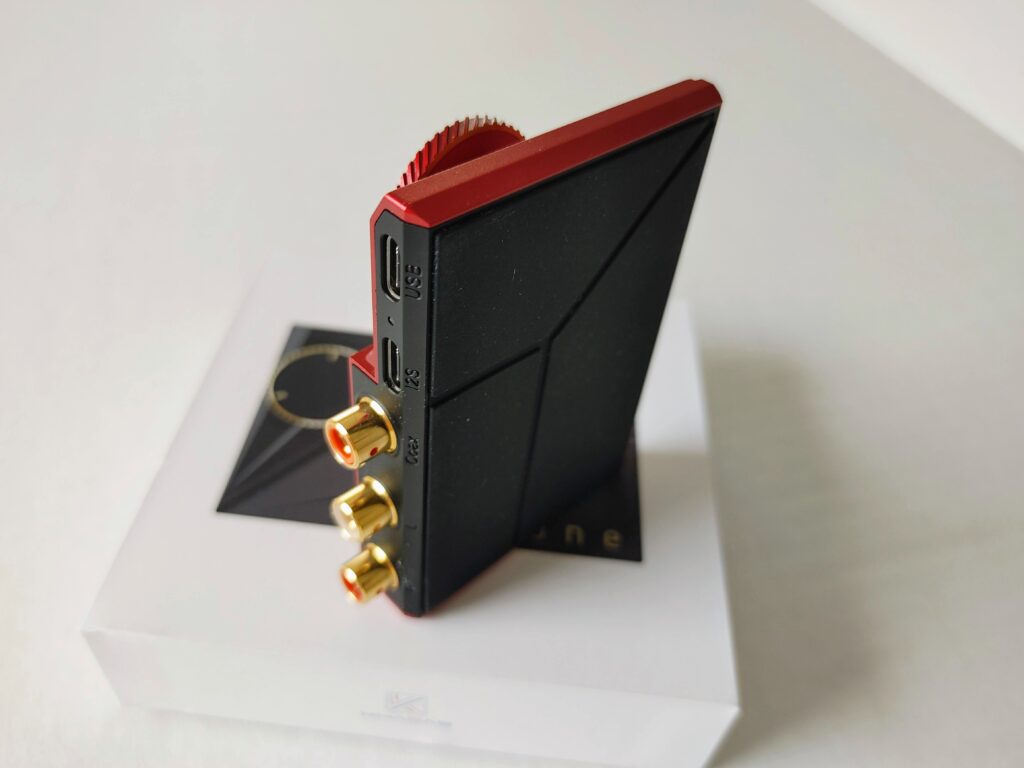
It did even better with more sensitive headphones like the Focal Elear,
Beyerdynamic T5 (3rd Gen),
Hifiman Sundara, and Sennheiser/Drop HD 58X Jubilee. My favorite pairing was the Sundara, which had just the right amount of detail and warmth to bring out the best of the Tone2 Pro.
Like most ESS-based DACs, I have heard that the Tone 2 Pro had a clean, detailed sound that tended to come out on the cool side. While it definitely had that ESS “sparkle,” it wasn't quite as shimmery as some of the ESS implementations I have heard, which allowed the sound to breathe a little bit better.
That said, there was definitely some emphasis on the upper midrange, which can be edgy on certain songs, but overall the sound was very clean and balanced. There was no trace of the noisiness that plagues other budget DAC/Amps.
As far as the DAC section was concerned, the separation of elements in the mix was decent for the price. On the song “Teach You” from Emily King’s “Sides” album, voices and instruments were credibly reproduced, but the presentation didn’t quite have the depth and air you would get at a higher price point.
However, the Tone2 Pro did provide nice weight and presence, which made it engaging. That carried over to the RCA outputs, which played loudly and cleanly into my hi-fi rig.
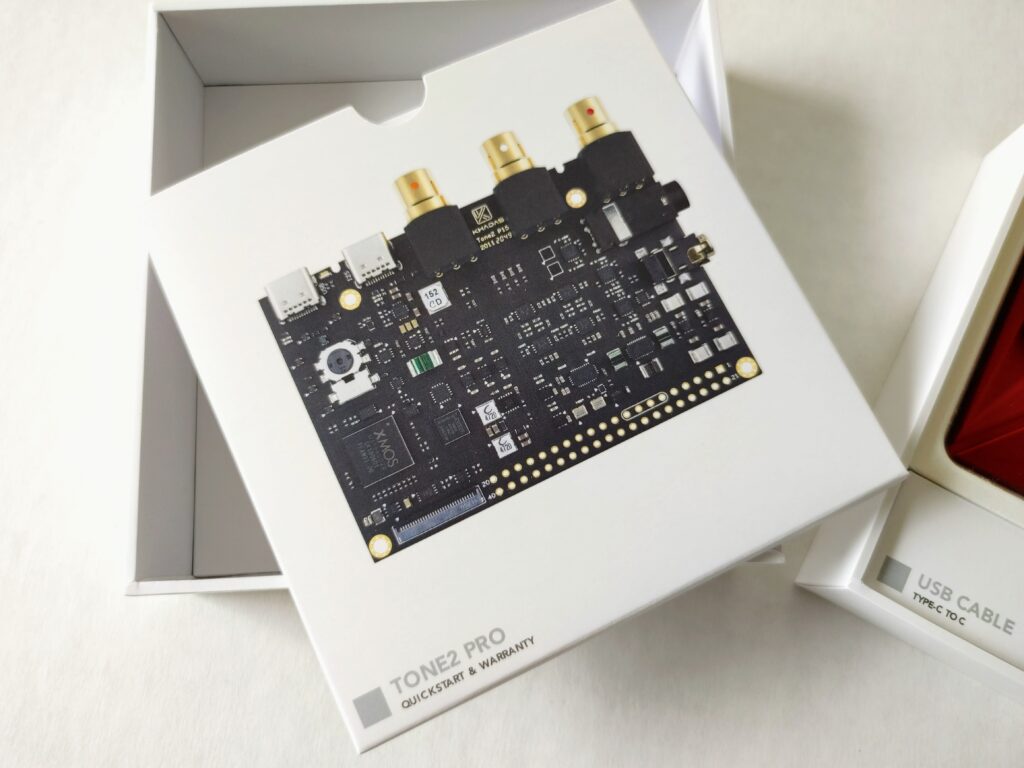 Compared to the iFi Hip Dac
Compared to the iFi Hip Dac
I chose the
$149 iFi Hip Dac for a comparison unit, which has a similar feature list and costs just a little bit less than the Tone2 Pro. As far as power was concerned, I would give the Hip-Dac a slight edge as it could drive the Aeon Flow Closed headphones a little harder than the Tone2 Pro. It was also a whole lot easier to select high-gain mode on the Hip-Dac using the “power match” button on the front.
However, the Hip-Dac didn’t have the RCA connections of the Tone2 Pro nor the extra USB port for expandability. The Tone2 Pro was also more detailed on the top-end than the iFi DAC, providing a little more sparkle and separation. It also had a little bit more depth in the mids.
That said, some may like the warmer, more rounded-off sound of the Hip-Dac over the cold crispness of the Khadas product, especially if they have a brighter headphone. To me, the iFi DAC is a little more organic. On the other hand, the Tone2 Pro will probably match better with warmer, darker headphones as it will open them up a bit.
The Wrap Up
The
Khadas Tone2 Pro is a very well-built and powerful DAC/Amp, which offers more connection options than other devices its size. It has a very clean and detailed sound which is sure to open up darker, warmer headphones. It also has a wealth of features, including full MQA decoding (remarkable at this price point!), DSD compatibility and seven different DAC filters.
The only issue I have with the Tone2 Pro is the confounding control setup. If you can master that, you will find this flexible device to have a lot going. Those looking for a space-saving DAC/Amp with good power, clean output, and a lot of connections should check out the Tone2 Pro.
This review was originally posted at hifitrends.com:
http://hifitrends.com/2021/02/22/kh...onary-dac-amp-will-make-your-headphones-sing/








